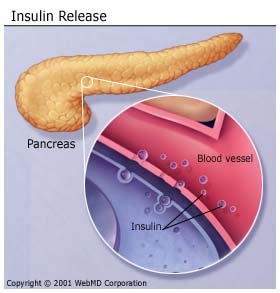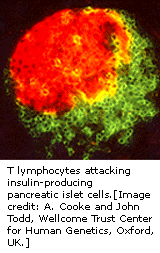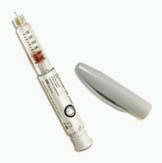|
|
|
|
|
|
In type 1 Diabetes, the pancreas make little or no insulin, thus impairing the body's ability to turn sugar into energy. It is most commonly known as juvenile diabetes, becaue it develops mostly in teens and people under the age of 30. Like in all types of diabetes, the pancreas beneath the stomach stop making the insulin. When the pancreas senses high blood sugar it squirts out insulin to lower it and protect your body.This is important because high levels of sugar can be poinonous.
Inheritance
Type 1 diabetes is an autoimmune disease. . In diabetes, the immune system attacks the insulin-producing beta cells in the pancreas and destroys them. The pancreas then produces little or no insulin. Someone with type 1 diabetes needs to take insulin daily to live. This disease is not inherited from the parents, and doesn't necessarily run in families.
Symptoms
Symptoms for diabetes, type 1 include: 1) excessive thirst and hunger
2) Frequent urination
3) Loss of weight
4) blurred vision
5) muscle cramps etc.
|

 |
Diagnosis:
1) Physical examination
2) Urine sugar test
3) Blood glucose tests
4) Oral glucose tolerance test (OGTT)
5) C-peptide blood test
6) Insulin level blood test
7) Urine ketone tests
Treatment: The amount of insulin must be balanced with food intake and daily activities, and all Diabetes type 1 patients should take insulin.
1) Today most patients inject insulin in their body with an insulin pen
2) or, use Insulin jet injectors by spraying it on their skin.
|
 |
|